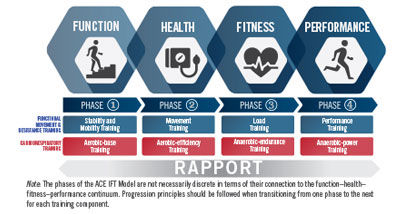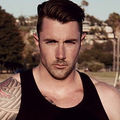The American Council on Exercise® (ACE®) is proud to announce the release of the ACE Medical Exercise Specialist Manual, the definitive resource for health and fitness professionals working with special populations. The new manual incorporates the latest science-based assessments and programming from leading experts in clinical and post-rehabilitative exercise, making it an outstanding resource for professionals preparing to earn the ACE Medical Exercise Specialist Certification and an updated comprehensive reference manual for current ACE Certified Medical Exercise Specialists (ACE-CMES). Introduced this month, the ACE Medical Exercise Specialist Certification is the evolution of the ACE Advanced Health and Fitness Specialist Certification.

So What’s New?
The ACE Medical Exercise Specialist Manual is a cover-to-cover overhaul of the ACE Advanced Health and Fitness Specialist Manual. Although many of the chapters focus on the same disease and disorder topics, all content and references have been critically reviewed and updated to include the latest assessments, programming, progressions, and precautions for each ailment by the chapter authors, content reviewers, and manual editors, all of whom are experts in their respective medical exercise fields. In addition to this critical and complete revision, many special features have been added to enhance the learning experience through different interactive exercises and case studies. As part of the consistent effort that ACE makes in each of our new manuals, we asked all authors to emphasize the practical application of the theoretical knowledge. This is especially vital with this manual, given the complexity of the content.
In addition to the cover-to-cover enhancements, the new information and features in the ACE Medical Exercise Specialist Manual include:
- Applying the ACE Integrated Fitness Training® Model in the Medical Exercise Setting (Chapter 2) is a new chapter that outlines how the ACE IFT® Model can be used when working with the various clinical populations addressed in the manual. This chapter emphasizes the need for screening new clients and placing them appropriately within the ACE IFT Model training phases that correspond to the function—health—fitness—performance continuum (see Figure 1 below).

- Case Studies (Chapters 7-21) have been added to each of the disease- and disorder-specific chapters to provide real scenarios that ACE Certified Medical Exercise Specialists encounter on a regular basis.
- ACE IFT Model at a Glance (Chapters 7-21) sections have been added to each Case Study to explain how the ACE IFT Model was applied in the assessments, programming, and progressions with each client being discussed. This will give readers real-world examples of how to implement the ACE IFT Model with medical exercise clients.
- Nutrition Considerations (Chapters 7-21) have been added to each disease- and disorder-specific chapter, allowing readers to learn the nutritional needs for clients with specific ailments (e.g., coronary heart disease) alongside the relevant exercise programming content for that same ailment. Along with this update, the previous nutrition chapter titled “Nutritional Considerations for a Healthy Lifestyle” has been replaced by an expanded appendix titled “Principles of Nutrition for the Medical Exercise Specialist.”
- 10-step Decision-making Approach to Exercise Programming for Special Populations (Chapter 3), previously in an appendix of the ACE AHFS Manual, has been expanded and is now included in the chapter on “Working with Clients with Health Challenges.” This change allows the reader to learn about a comprehensive approach that can be used with clients with the conditions they will study in subsequent chapters.
- Communication Strategies and Behavioral Change (Chapters 4-5) has been expanded and split from one chapter previously into two all-new chapters, highlighting the increasing role that a mastery of these topics is playing in the health and fitness industry.
- Pulmonary Diseases: Asthma and Chronic Obstructive Pulmonary Disease (Chapter 10) replaces the previous “Asthma” chapter.
- Posture and Movement, and Balance and Gait (Chapter 14-15) chapters have been revised to take a more streamlined, application-based approach to the subject matter that is much more reader-friendly. The “Balance and Gait” chapter replaces the chapter previously titled “Mobility, Gait, and Balance.”
- Older Adult and Youth chapters have been removed, as ACE now offers stand-alone manuals on exercise programming for each of these non-clinical special population groups.
- Expand Your Knowledgesections have been added to highlight key research and new insights that medical exercise professionals should know, including how an old concept was revised with new information or how conflicting evidence can exist.
- Apply What You Knowsidebars have been added to give candidates insight into real-world examples that illustrate specific concepts. Essentially, the content helps readers take what they’ve learned, and apply it in actual work settings.
- Think It Throughfeatures ask thought-provoking questions that force readers to pause and digest concepts introduced in the manual.
- ACE Medical Exercise Specialist Manual eBook is available for purchase at checkout with any study program. Incorporating the most modern technology in digital publications, the eBook allows you to access core study materials from virtually any mobile device or desktop.
- ACE Academy has been developed to include new videos, learning activities, practical case studies, quizzes, summary reviews and practice tests.
The table of contents for the ACE Medical Exercise Specialist Manual is listed below:
ACE Medical Exercise Specialist Manual
Part I: Introduction
Chapter 1 Role and Scope of Practice for the Medical Exercise Specialist
Chapter 2 Applying the ACE Integrated Fitness Training® Model in the Medical Exercise Setting
Chapter 3 Working With Clients With Health Challenges
Part II: Leadership and Implementation
Chapter 4 Behavioral Change
Chapter 5 Communication Strategies
Chapter 6 Professional Relationships and Business Strategies
Part III: Major Cardiovascular and Pulmonary Diseases and Disorders
Chapter 7 Coronary Heart Disease
Chapter 8 Blood Lipid Disorders
Chapter 9 Hypertension
Chapter 10 Pulmonary Disease: Asthma and Chronic Obstructive Pulmonary Disease
Part IV: Metabolic Diseases and Disorders
Chapter 11 Overweight and Obesity
Chapter 12 The Metabolic Syndrome
Chapter 13 Diabetes Mellitus
Part V: Musculoskeletal Disorders
Chapter 14 Posture and Movement
Chapter 15 Balance and Gait
Chapter 16 Arthritis
Chapter 17 Osteoporosis and Osteopenia
Chapter 18 Musculoskeletal Injuries of the Lower Extremity
Chapter 19 Musculoskeletal Injuries of the Upper Extremity
Chapter 20 Low-back Pain
Part VI: Perinatal Considerations
Chapter 21 Prenatal and Postpartum Exercise
Appendix A ACE Code of Ethics
Appendix B Exam Content Outline
Appendix C Principles of Nutrition for the Medical Exercise Specialist
Appendix D ACE Position Statement on Nutrition Scope of Practice for Fitness Professionals
For more information, give our team a call at (888) 825-3636.




 by
by 







 by
by